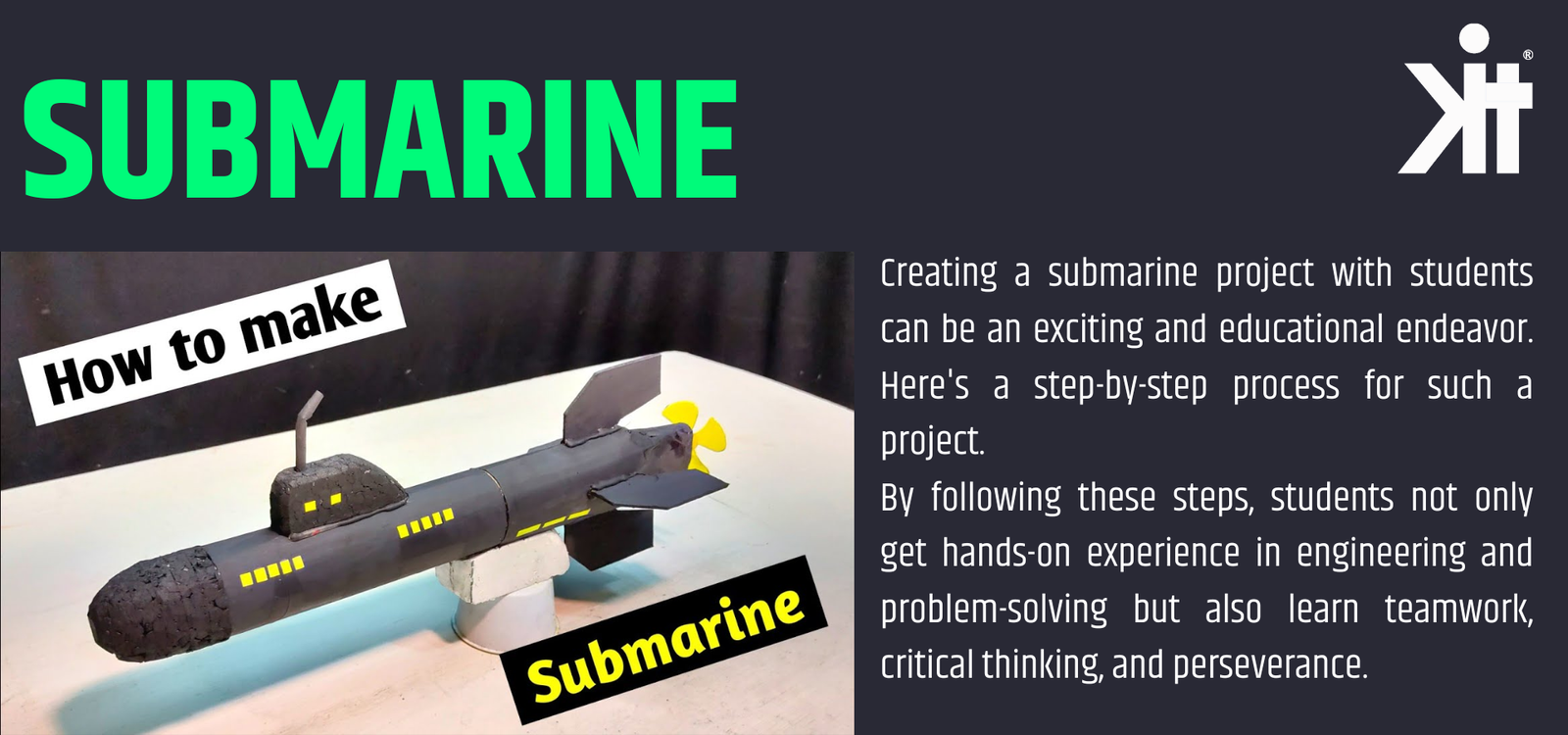Planning Phase:
Objective Setting: Define the purpose of the project – whether it’s purely educational, a competition entry, or a demonstration of learning.
Research and Study: Introduce students to submarines, their history, design, and basic principles of underwater vehicles. Discuss buoyancy, propulsion, and control mechanisms.
Design and Construction:
Brainstorming and Designing: Encourage students to brainstorm ideas and sketch designs. Consider materials and components needed for the build.
Materials Gathering: Collect necessary materials such as plastic bottles, motors, propellers, waterproof adhesives, buoyant materials, and other tools required for construction.
Building the Submarine:
- Construct the body of the submarine using plastic bottles or other waterproof materials.
- Assemble the propulsion system using motors and propellers.
- Create ballast and control systems for buoyancy and stability.
- Ensure the sealing of all components to prevent water leakage.
Testing and Iteration:
Safety Check: Emphasize safety measures during the testing phase, especially if using water. Adult supervision is essential.
Trial Runs: Conduct initial tests in a controlled environment, like a pool or tub, to check for buoyancy and basic functionality.
Adjustments and Improvements: Encourage students to observe the submarine’s performance and make necessary modifications to enhance its efficiency and functionality.
Learning and Presentation:
Documentation: Throughout the process, document each step, challenges faced, solutions found, and improvements made. This documentation will aid in the final presentation.
Final Presentation: Allow students to showcase their submarine project. Encourage them to present what they learned, the challenges faced, how they overcame them, and improvements made.
Reflection and Discussion: After the project, hold a session for reflection, discussing the overall experience, lessons learned, and what they might do differently in the future.
Key Tips:
Encourage Collaboration: Emphasize teamwork and collaboration among students during every phase of the project.
Embrace Failure: Encourage a mindset that welcomes failure as a part of the learning process. Each setback is an opportunity to learn and improve.
Celebrate Success: Acknowledge and celebrate achievements, both big and small, throughout the project.
By following these steps, students not only get hands-on experience in engineering and problem-solving but also learn teamwork, critical thinking, and perseverance.



